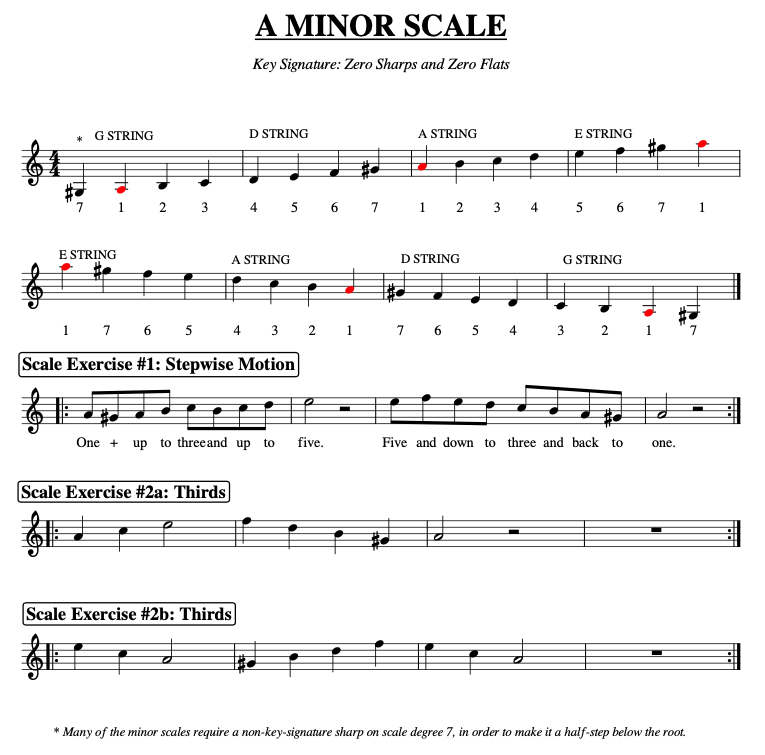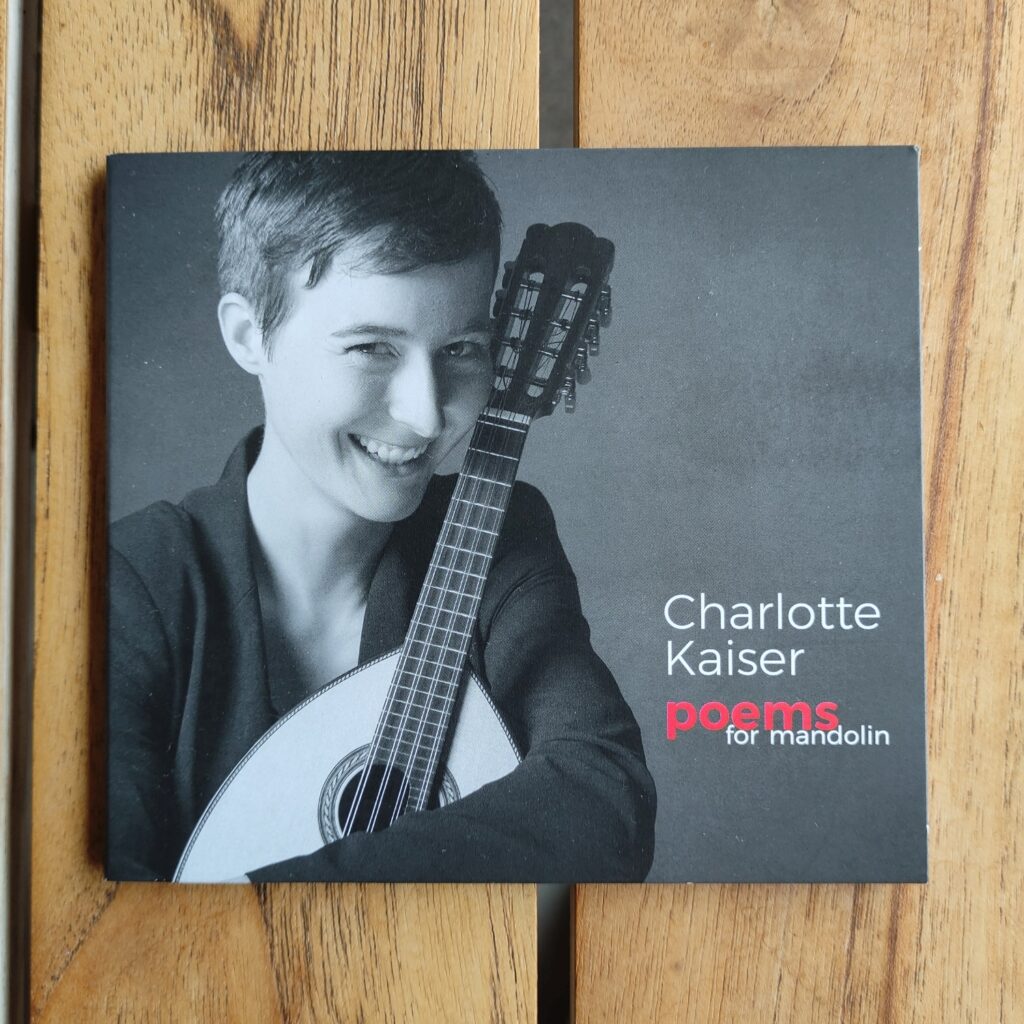Below you will find our illustrated chord charts for C family chords for mandolin. For help in deciphering our chord charts, see here.
Major Chords:
Minor Chords:
7 (Dominant) Chords
Altered 7 Chords:
Extended Chords:
C MAJOR
The major chord is built by stacking the 1st, 3rd, and 5th notes from the major scale; those three notes are called the major triad.
Some alternate spellings for C major chords are: C CM Cmaj Cmajor
#1 The “two finger” C chord, commonly one of the first chords a beginner will learn.

#2 This common three finger chord puts the root in the bass position. This fingering omits the fifth.

#3 This beautiful voicing doubles the fifth as the lowest two notes.

#4 and #5 Both these movable shapes are useful in voicing chords up the neck. #4: Root note on the 4th string, and #5: Root note on the 3rd string, with third interval as the bass.


C6 (Cmajor6)
The major6 chord is formed by adding the sixth scale degree (also called the major sixth interval) to a major triad.
Although the most common way of spelling this chord is simply “C6” you may find it spelled: C6 Cmaj6 Cmajor6 CM6
#1 is formed by adding a high A note to the simple “two finger” C chord.


#3 is shaped similarly to the C major chord form number two in the previous section. The second finger is moved from 2nd string to 1st string, 3rd fret, which adds the A note at open second string.

#4 is perhaps the easiest fingering for a C6, if the player is able to barre two strings at the 5th fret with a single fingertip. Those with very small fingers may use two fingers to achieve the same result.

#5 is perhaps the most difficult for many players, requiring a barre across all four strings.

Cmaj7
Major7 chords are rarely used in folk music, but appear often in jazz, classical and other genre. The chord is formed by adding the 7th scale note to the major triad.
Important: This chord is not to be confused with the C7 chord which adds the flatted 7th scale note!
#1 is probably the simplest voicing, it follows the 2-finger C chord by lowering the 2nd string C note ½ step to B. Can be barred with the second or the index finger, and small hands can use two fingers.

#2 barres the 1st and 2nd strings, but the first string could be left to ring open, replacing the 5th interval with the 3rd interval (E).

One could also finger form #3 with the open 1st string in order to voice the 3rd interval which is omitted in the form as shown.

Compare #4 & #5 here to the corresponding forms for the C Major triads shown earlier to see how the root is simply moved down ½ step to get the Major7 voice.


Csus (C suspended)
Suspended chords are typically used for effect when playing rhythm in order to add suspense, or a little spice, anticipating the major chord in a chord progression. The chord is formed by substituting the 2 or 4 note in place of the 3 note in the major triad.
The most typical spellings for these chords are: Csus4 Csus2
Csus4:


Csus2:



Cm
The minor chord triad uses a minor third interval, and so this chord can be formed from a C major chord shape by lowering the third a half-step. For the C chord, the E note of C major becomes an Eb in order to make the chord a C minor. To better understand this relationship, it can be helpful to compare these chords to the C major chords shown earlier.
C minor is the relative minor of Eb major, thus the key signature as shown in the notation below is the same for both keys.
You may find this chord spelled as follows: Cm Cmin Cminor C-
Chord #1: Compare this chord to the first two-finger C chord given in the C major section above to see how the index finger goes back one fret, flatting the third (E note) and the 1st string E note is fretted in order to raise the E up to G


#3: Compare this chord to the 4th C major chord form given in this book to see how the E note has been flatted.

#4: Compare this chord to the 5th Cmajor chord given in this book, and take note of how the E note has been flatted


Cm6
Common spellings for this chord are Cm6 Cmin6 Cminor6 C-6
Cm6: #1-#3 show some Cm6 voicings. The Cm6 chord could also be properly considered as Cm(add13).
Of note: The Cm7 chord can be made into a Cm6 chord by lowering its b7 note a half-step. Likewise, a Cm6 chord can be made into a Cm7 by raising the 6 note a half-step to a b7 note. You can see this clearly when comparing the Cm6: #2 chart below with the chart for Cm7: #1 in the next section.



Cm7
These are dominant 7 chords, built with a b7 note.





Extending minor chords can seem tricky. One way to grasp the idea is to start mentally with the m7 chord, whose intervals would consist of Root – Minor 3rd – Perfect 5th – Minor 7th (1 – b3 – 5 –b7). This is explained in more detail in the supplemental chapter of this book, Minor Chord Extensions. [NOTE: The preceding sentence refers to an article I haven’t yet published to this website. Coming soon]. In this and the following two sections, we are only showing three chord forms, the m6, m7 and diminished chords.
Cm7b9:

Cdim (diminished C Chords)
In this Chord Bible, I include the diminished chord under the minor chord heading simply because the chord contains a minor third and is built by stacking consecutive minor thirds.
In diatonic harmony, diminished chords are built on the 7th degree of a major scale. They are constructed by stacking minor thirds, so the diminished triad is 1 – b3 – b5. A fully diminished chord adds a double-flatted seventh: 1 – b3 – b5 – bb7, and a “half diminished” consists of the diminished triad with a flat seven added: 1 – b3 – b5 – b7. The double-flat 7 yields the same note as the 6 in our modern system of 12 tone equal temperament. For this reason, in the key of C, we use the note name “A” to stand for “B double-flat (Bbb)” in this chord bible.
The half diminished chord is essentially the same as the m7 chord (1-b3-b7) with the 5 flatted, so it is also often referred to as a m7b5 chord.
You’ll find the chord spelled as: Cdim Cº for the fully diminished chord, or Cm7b5 Cø Cdim for the half-diminished chord.
The m7b5 chord:

The Cdim chord:

C7
C7 denotes a dominant 7 chord. The dominant 7 chord adds a flatted 7th note of the scale to the chord (as opposed to the major7 chord which would add the unaltered 7th note of the scale). Dominant chords are often used as passing chords, C7 is the dominant chord in the key of G, for example, and often is used before resolving to a G major chord.
Typically, the chord is simply spelled C7, but you may also find it spelled Cdom7
#1, and #5: These shapes are useful as partial chords, omitting the E string notes, and easily movable around the neck for making the dominant 7 chords in other keys. Used as partial chords in this manner, shape #1 would omit the 5th and shape #5 would omit the root.

#2: This chord is built from the simple two finger C chord by adding the b7 on the E string.




Altered C7 Chords
The C7 suspended chords (C7sus, C7sus4) and the C7 augmented chord (C7aug, C7#5, C7+) are what I call altered chords because the basic major triad is altered. These chords have only four notes: The altered major triad notes plus the flat 7 note. In the suspended chords shown below, the third is omitted, replaced by the fourth. In the augmented chords of the following section, the fifth is sharpened a half step (or semitone).
C7sus4


C7aug, (C7#5,C7+)



Extended Chords
This final group of chords are what I call extended chords. Additional notes are added to the dominant 7 chord, generally by stacking thirds from the second octave. This results in chords of five or more notes. As the standard mandolin has only four courses of strings, some notes must be omitted when playing these extended chords. Compare the full set of intervals given below each chord name to the actual notes which are sounded in the chord fingerings shown below.
C7#9


C9, C7(add9)


C11, C7(add11)



C13, C7(add13)
































1 thought on “C Family Chords for Mandolin”